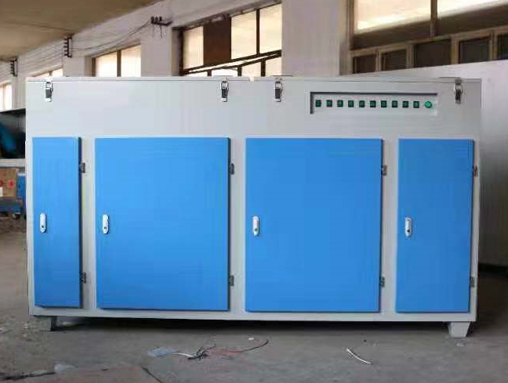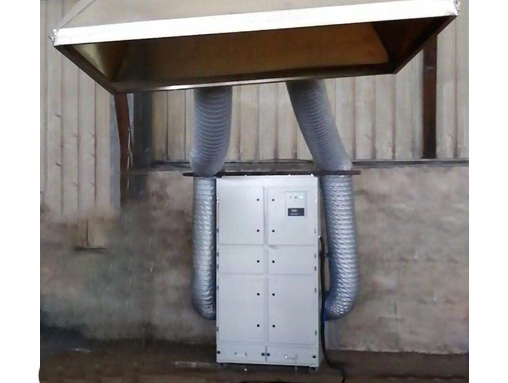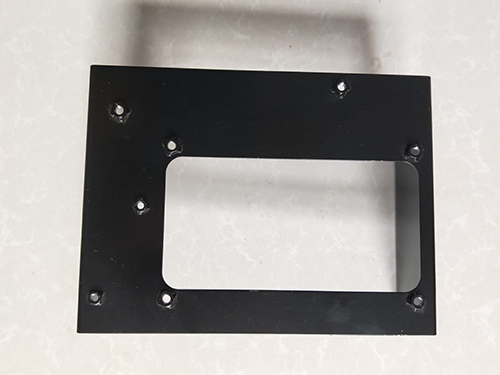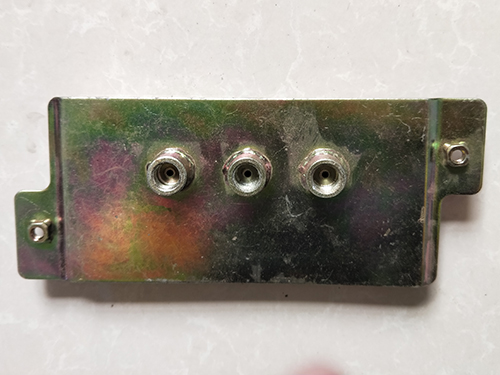Stamping parts manufacturing precautions and common defects
[1] Precautions for stamping parts manufacturing
Semi automatic and manual punching machines are equipped with dual hand brake switches, and it is strictly prohibited to press with foot pedals or single hand start switches. After the high impact adjustment is completed and normal stamping is carried out, close the soundproof box (except for the packaging of product 8065 during inspection). During continuous stamping, employees are not allowed to pick up products by hand within 1 meter of the punch press. When the technician is debugging the machine, only one person can debug it, not two people. Technicians can only adjust the machine and feed materials outside the machine, with a distance of no less than 1M. When installing the mold, tighten the screws and stop the machine after 4 hours to check if the screws are loose. When there is a problem with the mold during the production process and it does not need to be removed, it is necessary to first turn off the power of the injection molding machine and hang a maintenance sign on the power box before repairing the mold.
All tools should be returned to the toolbox after use and should not be placed on the machine to prevent them from slipping and injuring people. When the machine is not in production, the power supply should be cut off in a timely manner. When dealing with small workpieces, specialized tools should be used and direct feeding or retrieval by hand is not allowed. Producers should stand appropriately, keep their hands and heads at a distance from the punching machine, and always pay attention to the punching machine's movements. It is strictly prohibited to chat with others. Metal stamping parts; Operators and mold repairers are strictly prohibited from putting their hands into the mold during production.
Operators are strictly prohibited from reaching their hands onto the motor to clean up waste when installing the suction fan. It is strictly prohibited to wear slippers during work to avoid hitting feet with molds, iron blocks, etc. in the workshop. The class monitor, fitter, and mold repairman wear protective shoes when going to work; Male operators are strictly prohibited from keeping long hair, while female operators must tie up their long hair to prevent it from getting caught in the flywheel.
Attention should be paid to other oils such as white oil, alcohol, cleaning agents, etc. Gloves should be worn when packing materials, waste, and molds to avoid scratching hands. When there is oil, it should be cleaned in a timely manner to avoid slipping and falling. It is strictly prohibited to wear gloves when drilling and milling machines; Wear a mask and eye protection when using the grinder to protect yourself. Pay attention to dragging the mold to prevent it from falling to the ground (the flatbed truck must be lowered to transport the mold). Non electricians are strictly prohibited from connecting electricity and repairing machines. It is strictly prohibited to aim the air vent at people, as it may harm the eyes. The operator needs to wear earplugs. When abnormalities are found in the machine, turn off the power first and then promptly seek assistance from the on duty technician. Unauthorized handling is not allowed.
When new employees start work, the team leader should explain the operating procedures to them and study them once a week every day. When adjusting the machine, it should be adjusted to a single action and it is strictly prohibited to use a linked discharge belt. No flammable or explosive materials can be stored under the electric switch. Operators are strictly prohibited from chasing or hitting in the workshop to avoid falling, knocking over products, or injuring themselves. Perform equipment inspection according to the inspection content on the equipment inspection card, paying special attention to whether the guiding and braking devices of the punching machine are operating normally, and whether the single punch and continuous punch functions are clear. When installing the mold on the small punch (10T), first loosen the locking device of the guide rail, install the upper and lower molds, and then adjust the travel of the guide rail until it meets the requirements and lock the fastening device. In addition, when the high punch is used to mount the mold, hit the single stroke. After the upper mold is locked, the lower mold is locked after the oil pressure mold locking, and then checked again before production.
The tools (pliers, hooks) used for discharging or manually picking up raw materials are strictly prohibited from manually feeding or picking up raw materials. Single switch may hurt hands, dual switch is needed. The machine cannot leak oil, otherwise it will fall off. Do not expose the power supply, it is dangerous. Wear gloves and concentrate when stamping iron sheets, otherwise your hands may be injured. In work, first check if there are any abnormalities in the operation of the equipment, such as unclear single or continuous flushing, ineffective operation, or electrical faults. Stop the machine immediately and seek timely assistance from the on duty technician. The use of foot switches is strictly prohibited for punching machines, and all original equipment on the machine must be removed. When cleaning and inspecting equipment, cut off the power before operation. Cut off the power, clean and scrub the workbench, remove the mold for maintenance and storage, and check the lubrication system oil regularly every week.
[2] Common defects in automotive stamping parts
By using simulation technology, the feasibility of the mold can be analyzed during the design process, and possible defects in the stamped parts can be obtained through simulation. Relevant technologies can be used to solve the defects during the design process, which can fully change the quality of the stamped parts and improve the material grade of the metal stamped parts. Therefore, improving the process level of stamping and forming technology, enhancing the quality of the produced parts, and ultimately improving the overall quality of automobiles.
1. Wrinkles and wrinkles
During the stretching process, the flange material is subjected to tangential compressive stress, and once the compressive stress exceeds the limit, the sheet material will experience bulging in the tangential direction due to instability. The wavy bending around the flange is called wrinkling. Wrinkles often occur during the production process of deep conical or hemispherical parts. Due to the suspended state of the mixed material at the beginning of stretching, it is easy to cause wrinkling on the side walls.
2. Pulling apart
Tensile cracking is one of the common defects in stamped parts, which can be divided into two types: micro tensile cracking and macro tensile cracking. If micro tensile cracking occurs, it will produce cracks that are invisible to the naked eye, while macro tensile cracking will produce cracks that are visible to the naked eye. The occurrence of tensile cracking in parts is a manifestation of tensile instability, which is a common form of questioning in the stamping process of thin plates. When the tensile deformation force exceeds the tensile strength of the material in the transmission zone, the material plate will be torn. At this time, it is necessary to adjust the pressing force or adjust the tension gap appropriately to increase the gap and make it more uniform to avoid tearing problems.
3. Rebound
If there is a large amount of bending deformation during the drawing process of parts, after the drawing is completed, a large amount of stress will remain in the thickness direction of the mixed material. After the mold is closed, the residual stress and the contact force between the residual stress and the mold will be balanced. After removing the mold, the residual stress will cause rebound. After this problem occurs, there will be errors between the size of the parts and the original size, and springback is also a very common defect that is difficult to avoid in production work.
The process defects that still exist in the forming process of stamped parts can easily lead to problems such as wrinkling, tearing, and rebound. Therefore, in addition to improving the process and optimizing the manufacturing process of stamped parts, manufacturing plants also need to fully utilize simulation technology to further optimize the process, strengthen investment in technical research and talent cultivation, and promote the sustainable development of the manufacturing industry.







